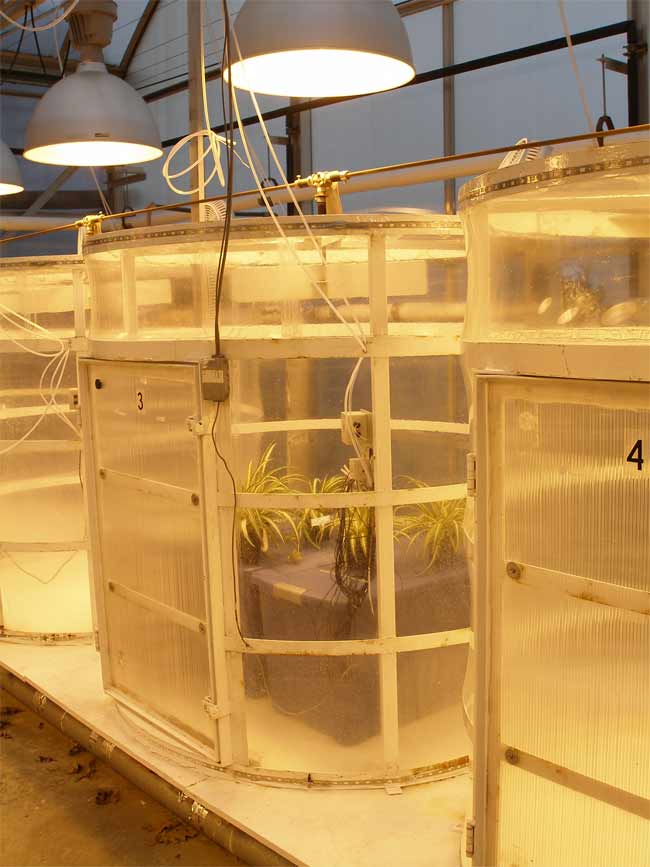Houseplants Make Air Healthier

Houseplants can neutralize harmful ozone, making indoor air cleaner, according to a new study.
Ozone, which is the main component of smog, forms when high-energy light, such as the ultraviolet light from the sun, breaks oxygen bonds, ultimately resulting in O3, three atoms of oxygen joining together. When formed higher up in the atmosphere, the ozone layer protects us from harmful UV rays. Ground-level ozone is not so pleasant.
While indoor ozone is a bigger problem in many developing countries, owing to the burning of biomass for cooking and heat in poorly ventilated quarters, the colorless gas can infiltrate from outdoors into offices and homes, even in developed countries. In addition, copy machines and printers, along with other equipment, can boost ozone concentrations indoors, the researchers say.
Leafy air filters
To figure out if green plants can clear the indoor air, Dennis Decoteau of Penn State's Department of Horticulture and his colleagues placed three common houseplants — snake plant, spider plant and golden pothos — into chambers in a greenhouse.
Ozone was then injected into the chambers at 10 times normal indoor amounts and concentrations were measured every few minutes until they were reduced to about 3 percent of the initial amount
While it took 75 minutes for ozone levels to come down in plantless chambers, air in chambers with plants reached the target in just 50 minutes. He speculates the plants take in the ozone through their stomates (tiny pores used for gas exchange) and then break it down once inside the plant.
Sign up for the Live Science daily newsletter now
Get the world’s most fascinating discoveries delivered straight to your inbox.
Future research would look at how many plants you need in an office environment and it would look at more realistic levels of ozone," Decoteau told LiveScience. In addition, some plants might be better than others at zapping ozone.
Plant positives
Here are some other reasons to keep indoor shrubbery around:
- Plant-filled rooms contain up to 60 percent fewer airborne molds and bacteria than rooms without plants, studies show.
- People who work in offices with windows and plants are happier than others, according to a study of 450 office workers in Texas and the Midwest. In fact, 82 percent of the participants who worked with plants and windows around said they felt "content" or "very happy," compared with 58 percent in windowless plant-less offices who said the same.
- Plants seem to make people more contemplative and self-reflective, according to one ethnologist.
Decotau's study was detailed in a recent issue of the journal Hort Technology.
- 10 Ways to Green Your Home
- More Plant Science & Information
- Video – Watch a Parasitic Plant Strangle its Host
Jeanna Bryner is managing editor of Scientific American. Previously she was editor in chief of Live Science and, prior to that, an editor at Scholastic's Science World magazine. Bryner has an English degree from Salisbury University, a master's degree in biogeochemistry and environmental sciences from the University of Maryland and a graduate science journalism degree from New York University. She has worked as a biologist in Florida, where she monitored wetlands and did field surveys for endangered species, including the gorgeous Florida Scrub Jay. She also received an ocean sciences journalism fellowship from the Woods Hole Oceanographic Institution. She is a firm believer that science is for everyone and that just about everything can be viewed through the lens of science.









